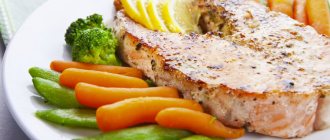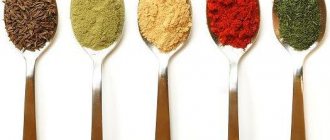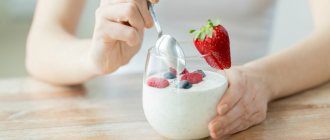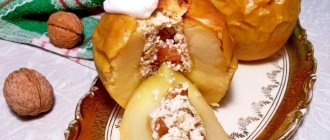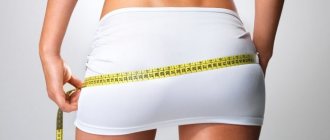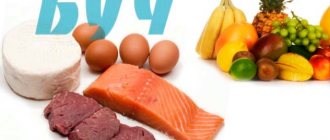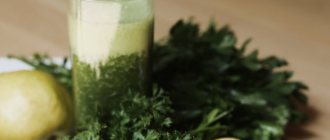General rules
The diet of cardiologist Robert Atkins is also known as the Hollywood nutrition system.
This is a low-carb technique that appeared in the twentieth century. The essence of the diet is to limit carbohydrates and provide the body with energy from stored fats, not glucose. Nutritionist Robert Atkins put together a four-phase method:
- the first phase is induction;
- second phase – weight loss;
- the third phase is preparation for maintaining a constant weight;
- the fourth phase is weight maintenance.
Phase I
The first phase is called induction and is the adjustment of the desired metabolism. This phase starts the process of ketosis - the fat burning process.
According to this most strict phase, which can last from 2 weeks, you need to consume no more than 20 g of carbohydrates per day. This rule should not be violated under any circumstances during this period, otherwise efforts will be in vain.
How does the first phase work? glycogen reserves , which are stored in muscle tissue, and the release of insulin into the blood stops due to a decrease in glucose levels. On days 3-4, the body switches from burning carbohydrates to burning fats: it needs to get energy from somewhere, right? This is how ketosis .
During the first phase, a week later, you can already notice some weight loss: the body has gotten rid of excess fluid, swelling has disappeared. Don't worry about this being the end result. Further, the fat burning process will occur even more intensely.
In general, the duration of induction directly depends on your well-being, endurance and results achieved over these 2 weeks. Remember that during the entire period of the first phase you must lose at least 1 kg of weight, and the results must be tangible and visible. If the results do not suit you, but patience allows, then “Induction” can be extended to 4-6 weeks.
Most often, the induction menu quickly becomes boring, and those losing weight switch to phase II.
Phase II
While in the second phase, your body continues to reduce weight and volume due to the same burning of the fat layer from which energy is extracted.
This is the main phase, which can last from 3-5 weeks to several years. And this is where you need to very carefully monitor your personal carbohydrate intake per day, at which you will still lose weight. Remember that the carbohydrate intake is individual for each person, and the optimal amount can only be found through experimentation.
Start your search for carbohydrate norms with the induction minimum, which is 20 g per day. Next, very gradually, 3-5 g at a time, increase the amount of carbohydrate-containing foods, observing your body and weight loss. Slowing down your weight loss rate indicates that you are near the best amount of carbohydrates allowed. Thus, by maintaining the found amount of carbohydrates per day, you will be able to lose weight in a comfortable manner and with a varied menu for a very long time.
During all phases, it is very important not to forget about one of the most powerful ways to increase the speed of the metabolic process - physical activity. Moreover, with a low-carb diet, they are the same basic component as counting and limiting carbohydrates in the diet.
The second phase can continue until you have 3-6 kg left to lose to your acceptable or ideal weight.
When this milestone is reached, you should move on to the third phase of the Atkins diet.
Phase III
The third phase is the transition from active weight loss to weight maintenance. Here you have already dealt, and very successfully, with a large amount of excess fat and are closer to your ideal weight. Now you are actively involved in sports, eat proper and healthy food, and your figure is a source of pride.
The entire third phase is aimed at choosing for yourself such a nutritional system, the amount of carbohydrates and physical activity that will be required to maintain the achieved results for the rest of your life. And here it is important to remember that if you return to a normal diet full of large amounts of carbohydrates, the weight will quickly return, possibly even in an increased amount. This is why the third phase is important: you need to decide how and what you will eat in order to enjoy life and your body.
Most often, this stage lasts from 1 to 3 months. Here you increase the amount of carbohydrate intake gradually, by 5-7 g per week, while strictly monitoring your body condition and the numbers on the scales. In addition, you can include in the menu every week some new product that you did not allow yourself before. It is during this period that experiments with sugar, sweets, and other favorite harmful foods occur. That is, if when you eat 30 g of chocolate once a week, your weight does not change or fluctuate, then you can fit this indulgence into your diet. Of course, you shouldn’t overdo it.
Phase IV
When you reach the fourth phase of the Robert Atkins diet, such eating will no longer be difficult for you, but only pleasure. Here you can already confidently note that you have reached your own ideal weight, and the low-carb menu has long become a habit. But you shouldn’t relax here either! It is necessary to constantly and very closely monitor your weight and the amount of carbohydrate-containing food. This phase is constant, one might say, for life, in order to avoid gaining weight again. Here you eat based on the amount of carbohydrates per day that was determined during the third phase of the diet.
Dr. Atkins' revolutionary new diet
The book that laid the foundation for this technique and with the help of which the diet became known throughout the world. In it, the doctor collected the results of his many years of experience and work on obesity . We recommend reading this book while on a diet, since it describes in more detail all the advantages and benefits of the diet, and explains the biochemical processes that occur in the human body when changing diet. Also, the work contains many delicious low-carb recipes.
Book "Dr. Atkins' New Revolutionary Diet"
Thus, the Robert Atkins method is a carefully thought-out and popular way to lose weight, perfect for adults suffering from excess weight problems. In addition, studies have proven that a low-carbohydrate diet is mandatory for epilepsy . This method of nutrition significantly reduces the number and severity of epileptic seizures.
In addition, it is also suitable for the treatment of childhood obesity. The method of using a low-carbohydrate diet for children is as follows: you need to gradually reduce the amount of carbohydrates in the child’s menu to an acceptable amount at which he will lose weight, avoiding the first phase of induction.
Basic Rules
Atkins diet chart
When maintaining the Atkins diet, you must strictly follow certain rules that allow you to get decent results. Each phase comes with its own instructions.
Stage 1 rules are as follows:
- Fractional diet - 3-5 times a day, with breaks of no more than 6 hours.
- A certain combination of proteins and fats , the body should receive no more than 20 grams of proteins per day.
- The portion size should be such that there is a feeling of satisfaction from the food, but not overeating.
- Drink plenty of fluids - at least 6-8 glasses of liquid.
- Constipation problems can be solved by introducing plant foods and dietary supplements containing fiber into the diet.
- Light physical activity is required.
- Preference should be given to products: fish and seafood, vegetable oils and eggs.
- Strictly prohibited: flour products, including bread, dairy products, vegetables containing starch, food and drinks containing caffeine and aspartame, seeds, any nuts, fruits - grapes, bananas, pineapples, oranges.
Stage 2 rules:
- Appetite control , which was set up in the first stage of the diet, to continue weight loss.
- Control the consumption of carbohydrate foods , it should be 80-120 units per day.
- Diet variety. Include carbohydrates in the menu that have the highest concentration of nutrients.
- Increase your physical activity somewhat. To monitor your weight loss progress, you should weigh yourself once a week.
This requires weight loss control. If the kilograms fall off too quickly, the daily carbohydrate intake should be increased.
Phase 3 rules:
- Increase your carbohydrate intake by 10 grams weekly.
- Supplementing the diet with other carbohydrate-containing foods , but not more than one product per day.
- Preference should be given to foods containing proteins and fats.
- Regular intake of vitamins is mandatory to replenish minerals.
- Weight control continues , during this period it is important to consistently maintain the desired level in order to further maintain the result.
- Regular physical activity.
- Eliminating factors that trigger weight gain. You should eliminate foods that lead to obesity, the emergence of new negative addictions, and the return of old symptoms of excess weight.
At this stage, it is important to maintain the results, and if weight gain occurs by more than 3 kilograms, you should limit your carbohydrate intake.
Phase 4 lasts a lifetime. You should not return to the previous diet, which led to excess weight. Lack of control in eating provokes the emergence of old problems; during this period it is necessary to maintain proper nutrition and not allow weight changes of more than 3 kilograms.
Atkins diet, allowed foods
Phase I
- any fish (white, red, river, sea);
- any poultry (turkey, goose, duck, chicken, chicken meat);
- any seafood (shrimp, sea cocktail, mussels, oysters, crabs);
- any meat (lamb, pork, veal, beef);
- chicken, ostrich, quail eggs in any form;
- any cheeses (Russian, Gouda, feta, Parmesan, mozzarella).
Salad vegetables are somewhat limited in the first phase: they can be eaten no more than 3 times a day, a serving is about 100 g. It is advisable that these be green vegetables: lettuce, watercress, cucumbers, peppers, parsley, beet greens, spinach, Brussels sprouts cabbage, dill, onion, sorrel, asparagus.
In addition, you can gradually add mushrooms and radishes, eggplants. You can decorate and flavor dishes with various seasonings, for example, black and red pepper, basil, rosemary, garlic. You can season salads with vegetable oils (grape seed oil, olive oil, sunflower oil), herbs, lemon juice and balsamic vinegar.
Phase II
The list of permitted and recommended products in the second phase remains similar to the list of the first phase. In addition, you can begin to introduce limited amounts of nuts (walnuts, roasted peanuts, almonds, cashews), which are beneficial for humans due to their polyunsaturated fats and acids. A little later, you can eat berries and fruits (melon, blueberries, raspberries, strawberries) in small quantities. Vegetables you can add to your diet include broccoli and tomatoes.
It is best not to eat the entire amount of carbohydrate-containing foods at one meal, but to distribute it throughout your day.
Phase III
During the third phase, you can begin to introduce limited amounts of some starchy vegetables: sweet potatoes, carrots, potatoes, beets. Also, finally, you can eat your favorite and popular fruits in minimal quantities: apples, bananas, mangoes, watermelon, cherries and kiwi. In addition, you can now get satiated with cereals: brown rice, oats, barley.
But, you should remember that you must carefully control the amount of carbohydrates per day, and your main diet, of course, must consist of protein products from the first phase.
The menu and list of permitted products of the fourth phase is similar to the third, with the adjustment that the diet must be adapted for a very long period.
Authorized Products
Below is a complete table of carbohydrates, fats and proteins that you need to follow when creating your menu. You definitely need to keep it with you, especially in the first phases of the diet, in order to navigate the permitted and prohibited foods and not eat anything that could harm the progress of the diet. For convenience, the table is divided into three sections: permitted, restricted and prohibited products.
Table of permitted products
| Proteins, g | Fats, g | Carbohydrates, g | Calories, kcal | |
Vegetables and greens | ||||
| eggplant | 1,2 | 0,1 | 4,5 | 24 |
| zucchini | 0,6 | 0,3 | 4,6 | 24 |
| cabbage | 1,2 | 0,2 | 2,0 | 16 |
| cucumbers | 0,8 | 0,1 | 2,8 | 15 |
| radish | 1,2 | 0,1 | 3,4 | 19 |
| arugula | 2,6 | 0,7 | 2,1 | 25 |
| iceberg lettuce | 0,9 | 0,1 | 1,8 | 14 |
| celery | 0,9 | 0,1 | 2,1 | 12 |
| tomatoes | 0,6 | 0,2 | 4,2 | 20 |
| spinach | 2,9 | 0,3 | 2,0 | 22 |
| sorrel | 1,5 | 0,3 | 2,9 | 19 |
Mushrooms | ||||
| fresh champignons | 4,3 | 1,0 | 1,0 | 27 |
Cheeses and cottage cheese | ||||
| Adyghe cheese | 18,5 | 14,0 | 0,0 | 240 |
| brie cheese | 21,0 | 23,0 | 0,0 | 291 |
| Camembert cheese | 21,0 | 23,0 | 0,0 | 291 |
| mozzarella cheese | 18,0 | 24,0 | 0,0 | 240 |
| cottage cheese 0% (low fat) | 16,5 | 0,0 | 1,3 | 71 |
| cottage cheese 5% | 17,2 | 5,0 | 1,8 | 121 |
| cottage cheese 9% (bold) | 16,7 | 9,0 | 2,0 | 159 |
Meat products | ||||
| pork | 16,0 | 21,6 | 0,0 | 259 |
| pork tenderloin | 19,4 | 7,1 | 0,0 | 142 |
| beef | 18,9 | 19,4 | 0,0 | 187 |
| beef tongue | 13,6 | 12,1 | 0,0 | 163 |
| veal | 19,7 | 1,2 | 0,0 | 90 |
| mutton | 15,6 | 16,3 | 0,0 | 209 |
| rabbit | 21,0 | 8,0 | 0,0 | 156 |
| jamon | 34,8 | 16,1 | 1,3 | 241 |
Bird | ||||
| chicken | 16,0 | 14,0 | 0,0 | 190 |
| turkey | 19,2 | 0,7 | 0,0 | 84 |
Eggs | ||||
| omelette | 9,6 | 15,4 | 1,9 | 184 |
Fish and seafood | ||||
| red mullet | 19,4 | 3,8 | 0,0 | 117 |
| pink salmon | 20,5 | 6,5 | 0,0 | 142 |
| dorado | 18,0 | 3,0 | 0,0 | 96 |
| carp | 16,0 | 5,3 | 0,0 | 112 |
| sprat | 17,1 | 7,6 | 0,0 | 137 |
| shrimps | 22,0 | 1,0 | 0,0 | 97 |
| pollock | 15,9 | 0,9 | 0,0 | 72 |
| mackerel | 18,0 | 13,2 | 0,0 | 191 |
| zander | 19,2 | 0,7 | — | 84 |
Non-alcoholic drinks | ||||
| green tea | 0,0 | 0,0 | 0,0 | — |
Juices and compotes | ||||
| dried fruit compote without sugar | 0,8 | 0,0 | 14,2 | 60 |
| * data is per 100 g of product | ||||
Authorized products
The Atkins method allows you to eat:
- Protein-rich foods such as fish, meat, eggs, soy.
- Vegetables and fruits with minimal starch content.
- Seafood (shrimp, squid).
- Hard cheese, cottage cheese.
- Mushrooms.
As for drinks, non-carbonated water, green tea, coffee, and dry wine are allowed.
Atkins diet, partially restricted or prohibited foods
When starting to adhere to such a low-carb diet, you should remember that this technique is complex and carefully developed. Therefore, you should very strictly follow the list of restricted and prohibited foods, consume them wisely and in small quantities.
However, there are general recommendations for banning certain foods or food groups:
- sugar (marshmallow, chocolate, confectionery);
- packaged drinks (juices, fruit drinks, compotes), soda, syrups;
- baked goods, muffins, cookies, pasta, dumplings, dumplings, cakes - everything made from white wheat flour;
- various store-bought sauces, soy sauce;
- fruits should be eaten with great caution;
- alcoholic drinks.
Below is a table of foods that must be limited on this diet.
Table of prohibited products
| Proteins, g | Fats, g | Carbohydrates, g | Calories, kcal | |
Vegetables and greens | ||||
| broccoli | 3,0 | 0,4 | 5,2 | 28 |
| potato | 2,0 | 0,4 | 18,1 | 80 |
| corn | 3,5 | 2,8 | 15,6 | 101 |
| green onion | 1,3 | 0,0 | 4,6 | 19 |
| carrot | 1,3 | 0,1 | 6,9 | 32 |
| salad pepper | 1,3 | 0,0 | 5,3 | 27 |
| parsley | 3,7 | 0,4 | 7,6 | 47 |
| beet | 1,5 | 0,1 | 8,8 | 40 |
| dill | 2,5 | 0,5 | 6,3 | 38 |
| green beans | 2,0 | 0,2 | 3,6 | 24 |
Fruits | ||||
| oranges | 0,9 | 0,2 | 8,1 | 36 |
| watermelon | 0,6 | 0,1 | 5,8 | 25 |
| bananas | 1,5 | 0,2 | 21,8 | 95 |
| pomegranate | 0,9 | 0,0 | 13,9 | 52 |
| grapefruit | 0,7 | 0,2 | 6,5 | 29 |
| melon | 0,6 | 0,3 | 7,4 | 33 |
| kiwi | 1,0 | 0,6 | 10,3 | 48 |
| lemons | 0,9 | 0,1 | 3,0 | 16 |
| tangerines | 0,8 | 0,2 | 7,5 | 33 |
| pomelo | 0,6 | 0,2 | 6,7 | 32 |
| apples | 0,4 | 0,4 | 9,8 | 47 |
Berries | ||||
| grape | 0,6 | 0,2 | 16,8 | 65 |
| strawberry | 0,8 | 0,4 | 7,5 | 41 |
Nuts and dried fruits | ||||
| peanut | 26,3 | 45,2 | 9,9 | 551 |
| walnuts | 15,2 | 65,2 | 7,0 | 654 |
| cashew | 25,7 | 54,1 | 13,2 | 643 |
| pumpkin seeds | 24,5 | 45,8 | 4,7 | 556 |
| dates | 2,5 | 0,5 | 69,2 | 274 |
| pistachios | 20,0 | 50,0 | 7,0 | 556 |
Cereals and porridges | ||||
| buckwheat | 4,5 | 2,3 | 25,0 | 132 |
| oatmeal | 3,2 | 4,1 | 14,2 | 102 |
| Wheat groats | 11,5 | 1,3 | 62,0 | 316 |
| white rice | 6,7 | 0,7 | 78,9 | 344 |
Bakery products | ||||
| wheat bread | 8,1 | 1,0 | 48,8 | 242 |
Chocolate | ||||
| chocolate | 5,4 | 35,3 | 56,5 | 544 |
Raw materials and seasonings | ||||
| adjika | 1,0 | 3,7 | 5,8 | 59 |
| mayonnaise | 2,4 | 67,0 | 3,9 | 627 |
| honey | 0,8 | 0,0 | 81,5 | 329 |
Dairy | ||||
| milk 1% | 3,3 | 1,0 | 4,8 | 41 |
| milk 2.5% | 2,8 | 2,5 | 4,7 | 52 |
| kefir 1% | 2,8 | 1,0 | 4,0 | 40 |
| sour cream 10% (low-fat) | 3,0 | 10,0 | 2,9 | 115 |
| sour cream 20% (medium fat content) | 2,8 | 20,0 | 3,2 | 206 |
Cheeses and cottage cheese | ||||
| parmesan cheese | 33,0 | 28,0 | 0,0 | 392 |
| ricotta cheese | 11,0 | 13,0 | 3,0 | 174 |
Fish and seafood | ||||
| Red caviar | 32,0 | 15,0 | 0,0 | 263 |
| mussels | 9,1 | 1,5 | 0,0 | 50 |
| seaweed | 0,8 | 5,1 | 0,0 | 49 |
Alcoholic drinks | ||||
| beer | 0,3 | 0,0 | 4,6 | 42 |
| champagne | 0,2 | 0,0 | 5,0 | 88 |
Non-alcoholic drinks | ||||
| cola | 0,0 | 0,0 | 10,4 | 42 |
| Fanta | 0,0 | 0,0 | 11,7 | 48 |
Juices and compotes | ||||
| tomato juice | 1,1 | 0,2 | 3,8 | 21 |
| * data is per 100 g of product | ||||
Table of prohibited products
The list of prohibited products also depends on the phase, but in general it looks like this:
- Products containing sugar, sweeteners, fructose, maltose.
- Pasta.
- Bread, buns and other baked goods based on wheat flour.
- Vegetables containing quite a lot of starch: beets, carrots, potatoes.
- Nuts, seeds.
- Sauces based on mayonnaise, margarine.
- Alcoholic drinks.
- Caffeine.
It is recommended to exclude all foods high in carbohydrates. This is why Atkins insists on studying the labels of purchased food and accurately counting the nutrients ingested.
Atkins diet menu
Due to the fact that the Atkinson protein diet does not limit the number of permitted foods, the weight and volume of portions are not prescribed in the menu for each day. This does not apply to limited products - it is advisable to observe their weight and volume as recommended in the menu.
Below is the Atkins diet menu for 14 days.
The first day
| Breakfast |
|
| Dinner |
|
| Afternoon snack |
|
| Dinner |
|
Second day
| Breakfast |
|
| Dinner |
|
| Afternoon snack |
|
| Dinner |
|
Day three
| Breakfast |
|
| Dinner |
|
| Afternoon snack |
|
| Dinner |
|
Day four
| Breakfast |
|
| Dinner |
|
| Afternoon snack |
|
| Dinner |
|
Day five
| Breakfast |
|
| Dinner |
|
| Afternoon snack |
|
| Dinner |
|
Day six
| Breakfast |
|
| Dinner |
|
| Afternoon snack |
|
| Dinner |
|
Day seven
| Breakfast |
|
| Dinner |
|
| Afternoon snack |
|
| Dinner |
|
Day eight
| Breakfast |
|
| Dinner |
|
| Afternoon snack |
|
| Dinner |
|
Day nine
| Breakfast |
|
| Dinner |
|
| Afternoon snack |
|
| Dinner |
|
Day ten
| Breakfast |
|
| Dinner |
|
| Afternoon snack |
|
| Dinner |
|
Day eleven
| Breakfast |
|
| Dinner |
|
| Afternoon snack |
|
| Dinner |
|
Day twelve
| Breakfast |
|
| Dinner |
|
| Afternoon snack |
|
| Dinner |
|
Day thirteen
| Breakfast |
|
| Dinner |
|
| Afternoon snack |
|
| Dinner |
|
Day fourteen
| Breakfast |
|
| Dinner |
|
| Afternoon snack |
|
| Dinner |
|
A similar menu for 14 days is designed for use during the induction phase. During the following phases, the amount of carbohydrate-containing foods in the diet should be increased step by step, introducing 5-10 g of carbohydrates per week. This Atkins diet menu for every day does not require strict adherence to days; they can be rearranged and changed among themselves.
Basic menu recipes
This diet, which is provided by Dr. Atkins, allows you to create a fairly varied, healthy and nutritious menu.
If we talk about possible diet plans, we can offer the following options for non-carbohydrate-containing dishes:
Menu 1.
- Breakfast may include products:
- boiled eggs in a bag, choice of chicken or quail. It is worth remembering that 1 chicken is equivalent to 4-5 quail.
- Slices of ham can be replaced with boiled veal or shank. It contains a lot of collagen, which will have a positive effect on the cartilage tissue of the body.
- Lunch:
- Cabbage salad with carrots, flavored with vegetable oil.
- Dinner:
- Fried cutlet with cucumber, radish and avocado salad.
- Afternoon snack:
- Cottage cheese with sour cream.
- Dinner:
- Seafood (fish) salad with tomatoes and cucumbers (or other vegetables), with green onion dressing, arugula, sea salt and sesame oil.
Menu 2.
- Breakfast:
- Sardine salad with egg and leafy greens. For leafy greens, you can use regular green or red lettuce, arugula, and chard. As a dressing, you can choose sesame or pumpkin seed oil.
- Lunch:
- Cottage cheese with sour cream and chopped dried apricots or raisins.
- Dinner:
- Baked fish fillet with vegetables in parchment. As vegetables you can use eggplants, zucchini, bell peppers or olives.
- Afternoon snack:
- Sea cocktail, boil in salted water and season with homemade mayonnaise.
- Dinner:
- Stewed vegetables with chickpeas.
Carbohydrates are kept to a minimum. But it effectively affects body weight.
Atkins Diet Recipes
Beef tongue casserole
You will need:
- 400 g boiled beef tongue;
- 200 g champignons;
- 5-6 tablespoons of sour cream;
- 1 onion;
- 150 g hard cheese;
- a bunch of greenery;
- spices to taste.
Cut the boiled beef tongue into strips. Chop the onion and mushrooms and fry. Combine with tongue, add chopped herbs, sour cream and place in a baking dish. Sprinkle with grated cheese and bake at 180 degrees for 25 minutes.
Hearty scrambled eggs
You will need:
- 4 chicken eggs;
- 1 tomato;
- 3 Brussels sprouts florets;
- half an onion;
- 100 g green beans;
- 1 salad pepper;
- 3 sausages;
- a bunch of greenery;
- spices to taste
- 100 g hard cheese.
Fry all the vegetables with sausages in butter. Break the eggs into the semi-fried mixture, sprinkle with grated cheese and cook over low heat until cooked. Sprinkle with fresh herbs before serving.
Recipes for meat dishes suitable for the Robert Atkins diet
Meat is an excellent source of protein, which is very important for this diet. An endless variety of dishes can be prepared from different types of meat, thereby diversifying the menu and human diet. Any type of processing of raw materials is suitable for cooking:
- Roasting.
- Extinguishing.
- Boiling.
- Baking.
- Grill.
- Drying.
- Salting.
In addition, you can use absolutely any type of meat - there are no restrictions here, either on the fat content of the product or on the color (red or white). The main thing is that possible hormones in meat do not have a negative effect on humans. The most valuable for a person are:
- Veal.
- Beef.
- Turkey.
- Rabbit meat.
- Quail.
- Duck.
- Lamb.
- Game – venison, hare, wild boar.
Less valuable are:
- Chicken's meat.
- Pork.
And this is due not so much to the nutritional value of the ball itself, but to the technology of its cultivation, which uses hormone-like substances and low-quality feed. As a result, meat becomes not very suitable for consumption if a person strives to obtain exclusively high-quality products.
Recipes that correspond to the Atkins diet and which can be used in the diet of different phases of the regime:
Duck baked with oranges.
Cooking:
- To prepare a duck, it is necessary to thoroughly process the bird carcass, cleaning it from horns and remnants of feather pads. Eliminate excess fat. Gut, rinse and dry with paper towels.
- Rub the inside and outside of the meat with sea salt. Wash the orange and cut into thin rings.
- Place some of the rings inside the carcass, evenly distributing them inside. Place the rest on top of the duck. Place a few pieces of butter on top.
- Place in the oven to bake on a deep baking sheet, periodically remove and pour over the resulting juice to make it juicier, softer and saturated with juices and aromas.
Lamb stewed with vegetables.
Cooking:
- Peel the lamb from the membranes and cut into small cubes, with a side size of approximately 2-3 cm.
- Place in a saucepan and place on low heat.
- At the same time, peel the onion and cut it into small slices. Its quantity depends on individual taste. Add to meat.
- Crush a few cloves of garlic with the flat side of a knife and chop into small pieces. Add to meat.
- Adding a tomato to a dish can drown out the specific smell of lamb - this will appeal to those who don’t like it. Tomatoes should be doused with boiling water, peeled and cut into cubes, added to the meat and simmered over low heat for about 1 hour. Or until the meat is completely soft.
- At the last stage, add a small amount of cilantro, salt and pepper. It will become fragrant and aromatic. You can't add too much oil.
- The meat is ready.
In case of failure
With such a diet, it is rare, but breakdowns do occur. Despite the fact that here you can eat an abundance of permitted foods, sometimes ingrained eating habits do not let go, and people fill up on carbohydrate foods: sweets, fast food, and semi-finished products. These products provoke a sharp jump in sugar in the body, and the main process of the diet - ketosis gets lost. In order to restart this process necessary for weight loss after a breakdown, you need to eat for 4-5 days according to the first phase of the diet - induction. It is very important not to break down again in such a situation, watch this! And after this time, very gradually begin to increase the amount of carbohydrates per day, by 3-5 g.
If you failed at the very beginning of the diet, during the induction phase, which lasts from 2 to 6 weeks, the principle of action will be the same, only you need not to increase the number of carbohydrates, but to complete this phase and achieve your ideal weight.
Weight Loss Results
They will not only be present, but also impressive - up to 7 kg per month. Does it seem like this is not enough? And completely in vain! Official medicine approves of just such slow weight loss, when the body has time to rebuild itself. Most often, the loss is only 4.5 - 5 kg in 4 weeks, but this result can be increased by physical activity - it is not necessary, but, according to Dr. Atkins, it is highly desirable.
Pros and cons of a low-carb diet
| Advantages | Flaws |
|
|
Dr. Atkins Diet: Comparison with the Dukan Diet
Both diets require a predominance of protein foods in the diet. They include reducing the percentage of complex carbohydrates in the menu. When following effective diets, it is recommended to exclude from the diet:
- sweet desserts;
- fresh baked goods.
Both diets have four main stages. However, they do not imply acute restrictions on the number of meals or the size of portions.
The Atkinson diet provides the following differences from the Dukan weight loss system:
- It is allowed to eat dishes made from pork, goose and duck.
- The Atkins diet may contain nuts, vegetable oil and butter.
- Ginger, mustard and adjika, unlike the Dukan diet, are among the prohibited foods.
- The amount of carbohydrates consumed is strictly calculated. Their recommended daily intake is no more than 120 grams per day (carbohydrates are calculated according to the stage of the diet).
- Unlike weight loss using the Dukan method, the Dr. Atkins diet does not involve alternating carbohydrate and protein days.
Adviсe
- Be sure to monitor the composition and carbohydrate levels of your products! Often, large amounts of carbohydrates can be hidden in unexpected foods.
- Replace your usual high-carbohydrate side dishes (cereals, potatoes) with approved vegetable side dishes that contain lower carbohydrate content. But in general, you can skip the side dishes by adding a vegetable salad to the main dish.
- Keep a table of carbohydrate indicators in foods always in sight: in your purse, on your desk, in the kitchen. Remember that you always need to control your carb intake!
- The Atkins diet is a lifestyle, so plan to stick with it long-term.
- In Russia, the Atkins diet has an analogue, which is based on the same principle of reducing carbohydrates - this is the Kremlin diet . It is less balanced and not as carefully thought out. Therefore, if you are faced with a choice of which system to follow, choose Robert Atkins and his method, which is supported by various weight loss recommendations, a lot of recipes and many positive reviews.
- Sports are a must here! Good physical activity and strict adherence to the Atkins diet will guarantee you an ideal body.
Contraindications
As already mentioned, the Atkins diet can lead to irreparable consequences, serious changes in the functioning of the body and all its systems. It is unsafe for a completely healthy person. And in some cases it is completely prohibited. Contraindications include the following conditions:
- mental disorders;
- diseases of the gastrointestinal tract;
- postoperative period;
- pregnancy and lactation;
- kidney and liver diseases;
- autoimmune disorders;
- work involving heavy physical activity.
The diet is also contraindicated for persons under 18 years of age and the elderly. Also, without consulting a specialist, it is prohibited for patients with diabetes to adhere to it.
Atkins diet: reviews and results
The principle of low-carbohydrate nutrition originated in the mid-twentieth century, but only at the beginning of the 21st was it explored. Reviews of the Atkins diet, based on thorough research, have shown that the system is effective for weight loss and weight control. Among other things, the US Association of Family Physicians has recognized the diet as an effective means of losing weight. Despite this, doctors insist that the advantage of protein in the diet can negatively affect the functioning of the heart and kidneys. Reviews from those who are losing weight also vary: the majority say that the method is excellent at helping to cope with excess weight, but there are also those who reject this method of losing weight.
- “... When my friend told me that there is such an Atkins diet for 14 days and on it you can say goodbye to the hated excess weight during this time, I didn’t believe it. She spoke in detail about the fact that there are 4 phases of the diet, but the first is the most effective. The menu is very simple: eat only protein and very rarely vegetables. You exclude fruits, cereals, sweets and other joys. And I tried it! To be honest, I had no idea that a diet could be so easy. In addition to this, I lost 5 kg. I wanted to continue losing weight. After a little searching for the origins of this technique, I found Dr. Atkins’ book. With her, I discovered a new style of eating in which you can not starve and still lose weight and look great. So, I smoothly moved to the second phase of the diet, and now I am in the third. At 48 years old they give me no more than 30 years. I think this is the best characteristic of this diet!”;
- “... I started on the Atkinson diet, for a total of six months I adhered to this method. Here's what I noticed. When I ate only proteins and 20 g of carbohydrates a day, the weight went off. But when I started adding carbohydrates, at least 5 grams at a time, I started gaining weight again. It is possible, of course, that my norm is no more than 20 g of carbohydrates per day, but for me this is too strict. Moreover, the state of health with such a restriction was not entirely satisfactory. That’s why I decided to quit the low-carb diet”;
- “... After I gave birth to a child, at the age of 22, with a height of 172 cm, I weighed 84 kg. Purely by chance I came across the official website of the Atkins diet. I liked the technique. There is also a forum where people exchange advice and support, and recipes for low-carb diets. Of course, such a thoughtful diet inspires confidence. Speaking of nutrition: both my husband and child ate these dishes with pleasure. Without restrictions, of course, and allowing yourself a little more. But what can we say about me, when after a month, with strict adherence to the diet, I lost 6 kg! There wasn’t much time for physical activity, but I limited myself to walking with the child twice a day. Now, a year later, my weight remains at the ideal level of 69 kg. The child has already grown up, and I can devote more time to sports, I can already see my six-pack abs and the muscles themselves are toned. Well, for my husband I have become even more beautiful - it’s worth my efforts. Therefore, I recommend this diet to everyone who is faced with the problem of excess weight!”
Advantages and disadvantages
The most significant advantage of the Atkins diet is the slight limitation of the menu - the diet contains a wide variety of foods, and sometimes not always healthy from a generally accepted point of view. For example, the doctor allows the consumption of cheeses, meat, eggs, any meat products, sour cream. Agree, even based on these products it is already possible to create a full-fledged menu.
A person adhering to the diet in question will definitely lose weight, but slowly. This is very good, since the metabolic process will have time to normalize, and the body will not experience shock, which often happens with a sudden transition to a limited diet.
One of the positive aspects is that there are no restrictions on the number of meals per day. This means that gastronomic breakdowns and overeating during forced fasting are excluded.
The Atkins diet also has its disadvantages. For example, a person will have to adhere to a prescribed diet all his life: carbohydrates must continue to enter the body in very limited quantities. That is, you cannot “relax”. In addition, you will need to constantly calculate/calculate the amount of food eaten and follow the rules of the diet according to special tables.
By the way, the weight loss method under consideration is characterized by an unbalanced menu, so additional intake of vitamin and mineral complexes as prescribed by a doctor should be mandatory.
About the principles of the Atkins diet, permitted and prohibited foods, watch this video:
Diet price
Robert Atkins's no-carbohydrate weight loss method is based on the consumption of regular protein products, which can easily be found and purchased at any time of the year at your local grocery store. A significant part of this weight loss technique is based on meat and fish products, which constitute the main costs.
In addition, the diet prescribes daily consumption of vegetables, cheese, cottage cheese, and eggs. Later, fruits, nuts, cereals. On average, at the initial stage of the diet, your weekly costs will be about 2500-4000 rubles. Further, in the next phases of the diet, the cost of weekly meals will be about 2700-4500 rubles.
System pitfalls
On the Internet you can find a variety of reviews from weight loss patients and doctors about the Robert Atkins diet: from the most flattering to the extremely unkind. Many doctors say that this low-carb diet can cause serious problems. In addition, the Hollywood diet is initially not suitable for pregnant and lactating women, people with diabetes, kidney disease, liver disease, and thyroid disease.
The most common side effects.
Metabolic slowdown
According to nutritionists, this nutritional system can lead to a slowdown in metabolic processes in the body. At the end of the diet, if you do not follow phase 4 and do not control the intake of carbohydrates, maintaining your weight at the previous level can be a difficult task.
Loss of appetite
Some nutritionists have considered similarities with mono-diets in the Robert Atkins system. When following the diet of an American cardiologist, it is necessary not only to exclude carbohydrates, but also to focus on foods from the first two steps of the pyramid, which significantly limits the diet. It is no wonder that after several weeks of such monotonous eating, a person feels disgusted with boring foods and loses his appetite.
Constant stress
A low-carbohydrate diet leads to exhaustion of the body and puts it in a state of stress. To trigger ketosis and breakdown of fats, it is important that the adrenal glands constantly produce adrenaline, which can hardly be called a normal state for a healthy body. In some people, this condition is accompanied by malfunctions of the digestive system, general weakness, and joint pain.
Increased risks for the intestines and other organs
The Atkins nutritional system can easily be classified in this category; it is not the most beneficial for intestinal health. Excessive consumption of protein foods and very limited consumption of carbohydrates causes changes in the intestinal microflora. Against the background of such a diet, the development of dysbiosis and all the associated consequences is possible.
In addition, a high-protein diet poses dangers to the kidneys. The Atkins diet is designed to trigger ketosis in the body. If the amount of ketone bodies does not exceed the norm, there is nothing to be afraid of. But even a small excess of ketones causes damage to cells in vital organs, including the brain and liver. But the kidneys suffer the most from excess ketone bodies. For this reason, the Atkins diet, like any other protein diet, is strictly prohibited for people with kidney failure, children, pregnant women, and nursing mothers.
At the same time, it must be said that two terms should be distinguished: ketosis and ketoacidosis. Both of them indicate an increase in the concentration of ketone bodies in the body. But if the first is a temporary condition caused by a certain nutritional system, then keatoacidosis is a very dangerous pathology that occurs only against the background of diabetes.
Instructions
Each stage of the Atkins diet has its own characteristics. Let's take a closer look at the nuances of these periods and their duration.
Weight loss
As mentioned, the active weight loss phase, also called induction, lasts 2 weeks. During this time, you can consume any permitted products in such quantities that the total content of y. i.e. per day did not exceed 20.
You should eat your fill, but still try not to overeat. There is no need to count calories, but you do need to control the amount of carbohydrates. It is better to prepare dishes yourself to be sure of their composition and nutritional value. The carbohydrate table compiled for the Atkins diet is given below.
| Product | Number of e. in 100 g | Product | Number of e. in 100 g |
| MEAT, POULTRY | FRUITS, BERRIES | ||
| All types of meat | 0 | Lemons | 5,4 |
| chicken broth | 0 | Apples | 9,5 |
| Beef broth | 0 | Cherry plum | 6,5 |
| Chicken liver | 1,5 | Oranges | 8 |
| Beef liver | 0 | Apricot | 9 |
| FISH, SEAFOOD | Kiwi | 10 | |
| All types of fish | 0 | Plums | 9,5 |
| Sea kale | 1 | Cowberry | 8 |
| Mussels | 5 | Cranberry | 4 |
| Oysters | 7 | Strawberry | 6,5 |
| Squid | 4 | Blackberry | 4,5 |
| Shrimps | 0 | Raspberries | 8 |
| Caviar red, black | 0 | Blueberry | 8 |
| VEGETABLES | Currant | 7,5 | |
| Mushrooms | 1 | DAIRY | |
| Fresh cucumber | 3 | Pasteurized milk | 4,7 |
| Fresh tomato | 5 | Cream | 4 |
| Cabbage | 3,2 | Sour cream 15% fat | 3 |
| Cauliflower and white cabbage | 5 | Homemade yogurt without sugar | 3,5 |
| Zucchini | 4 | Low-fat cottage cheese | 1,8 |
| Radish | 4 | Yogurt, kefir | 3,2 |
| Green onions | 3,5 | Homemade mayonnaise | 2,6 |
| Greens (dill, parsley) | 8 | Butter | 1,3 |
| Leaf lettuce | 2 | NUTS, SEEDS | |
| Spinach | 2 | Pine nuts | 10 |
| Asparagus | 3 | Walnuts | 12 |
| Sorrel | 3 | Almond | 11 |
| Bulgarian pepper | 5 | Hazelnut | 15 |
| Pumpkin | 4 | Peanut | 15 |
| Eggplant | 5 | Pumpkin seeds | 12 |
| Avocado | 3 | Sunflower seeds | 18 |
Hard cheese is also allowed (30 grams is equal to 1 c.u.), 1 chicken egg - 0.5 c.u. e. Vegetable oils can be used for frying and salad dressing; they do not contain carbohydrate units.
It is allowed to add sugar substitutes to drinks, but you should not get carried away with them due to the harmfulness of artificial additives to health. Spices and salt are used to taste, but you need to make sure that the spices do not contain unnecessary ingredients (sugar, monosodium glutamate).
The consumption of plant fiber is not prohibited and is even necessary. Only 1 tbsp. l. per day will help prevent constipation, which often accompanies the first phase of weight loss.
When following the Atkins diet, the menu for 14 days is structured as follows:
- Breakfast: omelet (2 eggs) with permitted vegetables (for example, spinach, tomato, onion), herbal tea.
- Lunch: stewed or baked meat with mushrooms, salad of leafy vegetables and herbs dressed with sour cream or butter, tea.
- Afternoon snack: sour milk or homemade yogurt (200-250 g).
- Dinner: baked fish, cabbage salad, tea.
This is just a sample food option. By combining various permitted products, you can create a varied and satisfying menu for every day. If you feel very hungry between meals, snack on a piece of hard cheese or a small amount of seeds or nuts.
On the Dr. Atkins diet, weight loss during 14 days of induction averages from 3 to 7 kg, depending on the initial body weight. Even if you have not lost the desired weight during this period, it cannot be extended. Staying in a state of ketosis for a long time leads to ketoacidosis, a life-threatening condition.
At the end of the induction, the balancing phase begins. It also involves reducing body weight, but the rate of weight loss slows down (the norm is 0.5-1 kg per week), and the diet becomes more varied.
According to the principle of the Atkins diet, the menu for the week at the balancing stage is compiled so that the daily diet fits into 25 USD. e.
In the next 7 days you can add another 5 units. e. Thus, the carbohydrate content is increased slightly every week until the weight continues to decrease. The limit after which weight loss stops varies from person to person. Some people continue to lose weight at 50-60 USD. e. per day, but more often the weight stops or begins to grow when it exceeds 40 cu. e.
If this happens, you need to return to a diet in which the weight loss process continues, and stick to it until the desired weight is achieved. If weight gain or maintenance occurs even with low carbohydrate intake (30-35 cu per day), the situation can be corrected by increasing physical activity.
Weight loss in this phase occurs slowly, but you should not be upset. Gradual weight loss is the key to long-term retention of results. The total duration of the balancing period should be about 2-3 months.
Transition period
Having lost weight to the desired parameters, begin to increase the amount of carbohydrates in your diet by 10 units. e. per week. This continues to be done as long as the weight remains stable. If your body weight does not change within 2 weeks (fluctuations of +/- 1 kg are acceptable), you should stick to this amount. e. and in the future.
Of course, you need to get carbohydrates during the transition period and after it from healthy foods, excluding chips, excess sweets and flour. If you want to be slim, bad eating habits should be a thing of the past. You can allow yourself a “belly celebration,” but as an exception, not regularly.
Weight maintenance
To further maintain the result, it is important to weigh yourself at least once a week. If you have gained more than 2-2.5 kg of excess weight, you need to return to the induction phase and correct the situation. With this approach, you are not in danger of regaining the lost kilos.
List of products with quantity restrictions
During the transitional stage of the diet, after losing most of the excess weight, conditionally acceptable foods may appear on the menu. The low-carbohydrate Atkins diet allows their consumption in limited quantities.
The list of conditionally permitted products includes:
- medium-fat cottage cheese, kefir, yogurt, unsweetened yogurt;
- sour cream, homemade mayonnaise without added sugar or thickeners;
- tomato paste;
- green peas, asparagus, beans;
- cucumbers, tomatoes, olives, zucchini, bell peppers;
- seeds, nuts;
- dry wine, low-carbohydrate beer;
- apples, lemons, raspberries, cranberries, lingonberries, blackberries, currants, avocados.
Useful video: weight loss experience on Dr. Atkins diet (recipes and tips)
Losing weight on Dr. Atkins' diet: allowed foods, recipes - revealing the secrets of beauty and health on Pitanie4Zdravie.ru
Beauty, health, success are so important in the life of every person. Our website has only one goal - to provide up-to-date information for everyone who is active in the modern rhythm of life, constantly improves themselves and is interested in their health and beauty. Here you will find a large number of materials on promoting health, achieving external beauty and internal harmony.
Also for you are different diets, cleansing and rejuvenation systems, recipes for hair, hand, body care and much more that will be interesting to any woman and man too. Health and beauty are the main aspirations of every modern person. After all, everyone knows that it is much easier to have beauty if you are healthy. That is why you need to know absolutely everything about beauty and health. This is exactly what our website was created for!
General principles and rules
On the Atkins diet, the menu for each day is based on the amount of carbohydrates allowed at this stage. This is the basic principle of nutrition, but in addition to it it is important to follow additional recommendations:
- eat small meals (4-5 times a day), do not allow a break between meals longer than 6 hours;
- drink at least 2-3 liters of clean water per day, 1 glass before each meal, the rest throughout the day;
- if you feel very hungry between meals, snack on permitted foods;
- try to limit or eliminate coffee.
Although during the diet, and especially at the first stage, you may feel a loss of strength, you should not forget about physical activity. If exercises and activities are difficult, start with walking. Regular physical activity will speed up the normalization of metabolism.
The Atkins diet shows good results in obese and significantly overweight people. If your weight is not much higher than normal, the process of losing weight will go slower, this needs to be taken into account.
Peculiarities
What is the essence of the diet? According to Dr. Atkins, excess consumption of carbohydrates leads to excess weight gain, so his nutritional system is based on reducing their amount in the diet. In combination with eating protein foods, this triggers the process of ketosis, a state in which fat deposits are broken down.
The diet consists of 4 stages. The first lasts two weeks and should be done in a state of ketosis. The second is dedicated to the gradual elimination of excess excess weight; its duration is determined individually. The third and fourth help you get out of the diet and learn to maintain optimal weight.
Throughout the entire process of losing weight, you will have to control the amount of so-called carbohydrate units (abbreviated as c.u.) in food. Only with accurate calculation will the diet be effective, therefore, to simplify control, it is worth purchasing kitchen scales if you don’t already have them.
Recipes
On the Atkins diet, it is better to plan your daily menu in advance. A notebook will help in this matter (to control the amount of cu) and, of course, a list of permitted dietary dishes.
Here are a few recipes approved by the author of this food system:
- Beef Bourguignon. For 6 servings: 1.4 kg beef, 1 tbsp. l. vegetable oil, 1 onion, 1 celery root, 1 carrot, garlic (2 cloves), 200 grams of champignons, dry red wine (400 ml), the same amount of broth and water, spices to taste. The beef is cut into cubes and fried. Separately, simmer the chopped vegetables until soft, then add wine and keep them on low heat for another 5 minutes. Place the meat and vegetables in one saucepan, add water and broth, add spices, salt and simmer for 1.5 hours. One serving contains 7.00. e.
- Cauliflower puree . For 6 servings: 1 medium-sized cauliflower, 1 leek, 3 tbsp. l. butter and cream, salt, pepper. Boil vegetables in salted water until tender. Then they are allowed to drain, placed in a blender and, adding cream, butter, spices, grind until smooth. One serving contains 5 cu. e.
- Chicken with lemon and spices. For 4 servings: whole chicken (about 1.5 kg), 1 tsp. salt, ground hot pepper, 2 tbsp. l. butter, 2 tsp. greens, 1 lemon. The chicken is rubbed with salt and spices inside and out. Half a lemon, cut into rings, is placed on the top side, trimming the chicken skin to create pockets. The oil and the rest of the lemon as a whole are placed inside. The chicken is placed in a preheated oven (180°) for 1 hour. The finished meat is served in portions, sprinkled with the released juice. There are no carbohydrates in this dish if you remove the lemon.
- Greek spinach salad. For 4 servings: 50 ml olive oil, 3 tbsp. l. wine vinegar, 300 grams of spinach, half a red onion, feta cheese (240 grams), 120 grams of baked sweet pepper (canned), chopped walnuts (1/4 cup), 1 clove of garlic pressed. Vinegar, olive oil and garlic are mixed and combined with the rest of the chopped ingredients. Top the salad with nuts. One serving contains 7.00. e.
- Italian style meatballs. For 4 servings: 2 pieces of low-carb bread without crust, 700 g ground beef, 50 g sour cream, 30 g grated cheese, 2 tbsp. l. fresh chopped herbs, 1 yolk, pressed garlic (1 clove), 240 grams of marinara sauce, vegetable oil for frying (1 tbsp.). Black pepper and salt to taste. The bread pulp is poured with sour cream and allowed to soak well. The remaining ingredients are mixed and the resulting mass is formed into small meatballs. They are fried in a frying pan for about 10 minutes, then the sauce is added and simmered until cooked. One serving contains 6 cu. e.
- Chocolate truffles. For 22 pcs.: 200 g soft butter, 100 g cocoa, sweetener to taste. Cocoa is ground with butter until smooth, a sweetener is added. The resulting mass is formed into balls or oblong bars, rolled in cocoa powder, wrapped in food foil and placed in the refrigerator for a couple of hours. One candy contains 1.4 cu. e.
As you can see, a nourishing and tasty diet, including even desserts, is quite compatible with weight loss. For more low-carb recipes, check out The Revolutionary New Atkins Diet.
Benefits of the diet
The main advantage of this nutrition program is its simplicity and relatively easy implementation - the restrictions are not too strict. As for the list of prohibited foods, it is practically no different from the similar list in other diets.
Another obvious advantage is the high effectiveness of the Atkins diet. The only requirement is to strictly follow the recommendations and follow simple rules. And although the weight decreases slowly, it does so qualitatively and for a long time.
Normalization of nutrition and metabolism is another plus of the diet. In addition, meals are not limited by any time or quantity.
